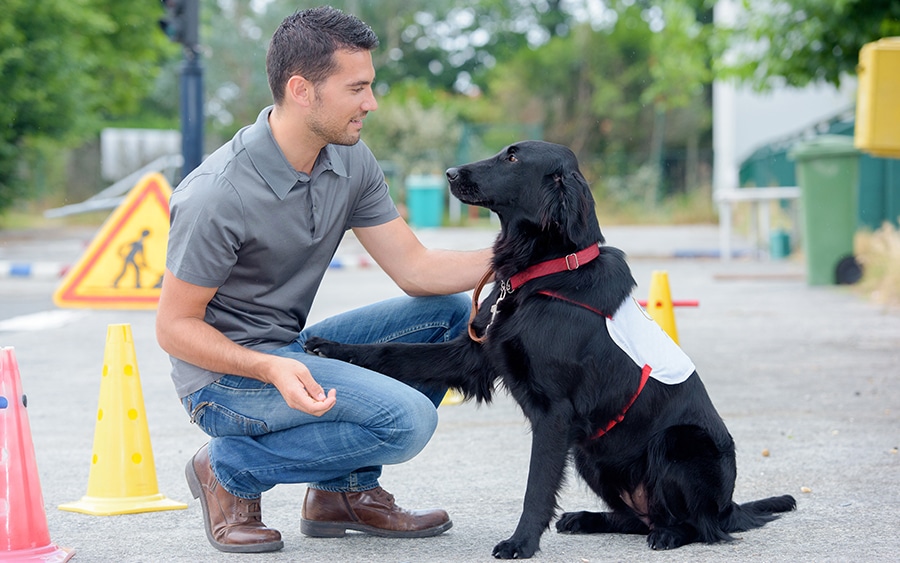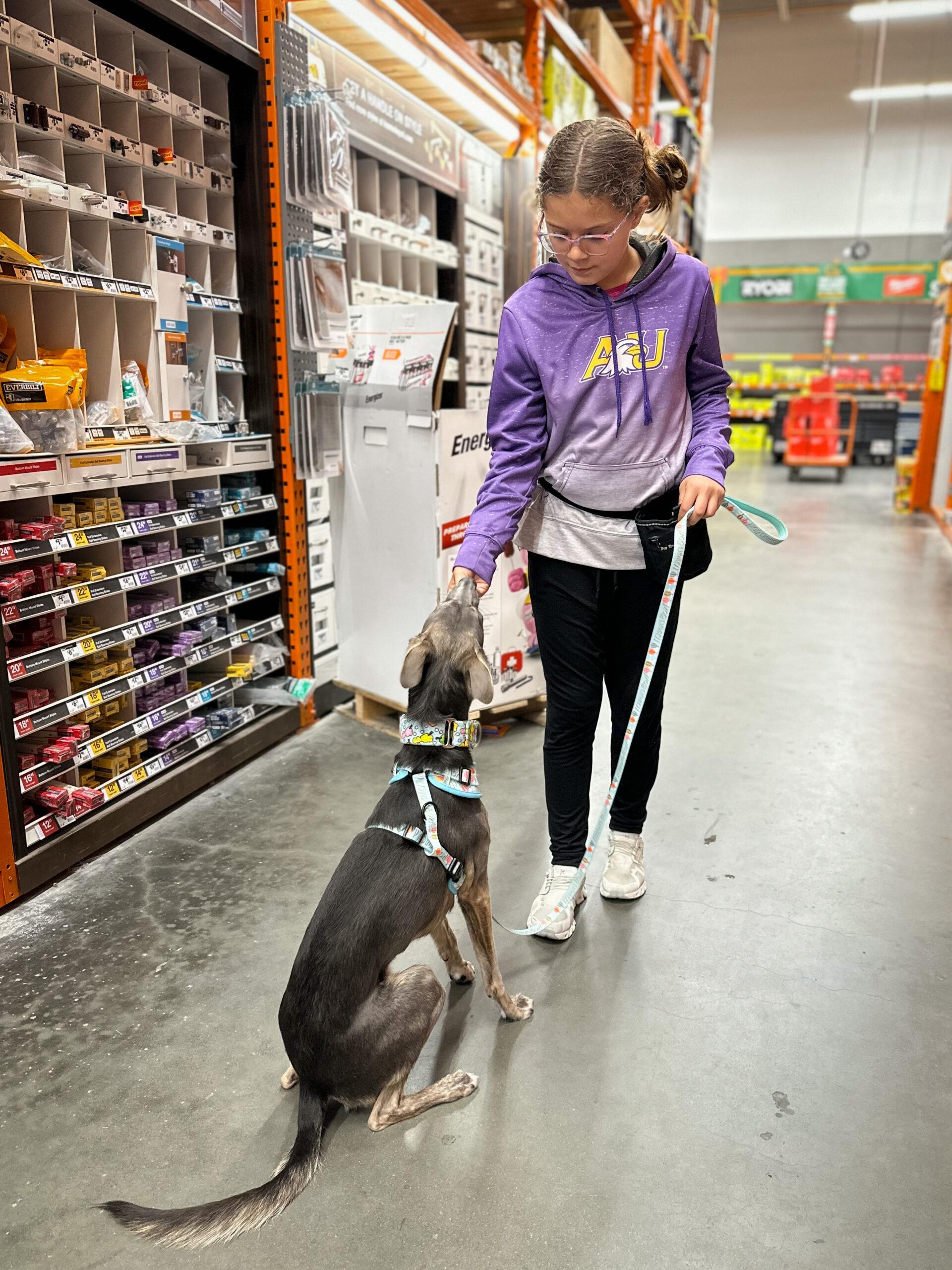Dog Training for First-Time Pet Owners: What You Need to Know
Wiki Article
Beginner's Overview to Successful Canine Training in the house
Successfully educating a dog in the house requires a nuanced understanding of canine actions and reliable communication methods. Establishing clear training objectives, utilizing top quality incentives, and maintaining uniformity across relative are essential aspects. Incorporating training into day-to-day regimens can boost both engagement and retention. However, lots of amateur fitness instructors experience obstacles that might hinder progression. To navigate these intricacies effectively, it's vital to explore a number of crucial aspects that can transform your method and bring about an unified relationship with your pet dog. What basic concepts should every novice grasp to make sure success?Recognizing Pet Dog Actions
Recognizing pet behavior is important for effective training and fostering a harmonious relationship in between human beings and their canine friends. Pets interact primarily through body movement, articulations, and faces, making it essential for owners to analyze these signals properly. Recognizing behaviors such as tail wagging, roaring, or trembling can provide insights right into a dog's emotional state and objectives.
Usual behavioral issues, such as aggressiveness, anxiousness, or extreme barking, typically originate from misunderstandings or unmet requirements. Observing and resolving these concerns quickly can stop escalation and ensure a favorable training experience. By fostering a deep understanding of pet dog behavior, owners can tailor their training methods to fit their canine friends, ultimately bring about a satisfied and well-behaved family pet.
Essential Training Devices
A well-appointed training room can substantially enhance the performance of pet dog training in the house. Important training devices make sure that both the pet dog and the fitness instructor can involve in efficient sessions that foster discovering and bonding.
Purchasing a tough chain and a comfortable, well-fitting collar or harness is vital for safety and security and control. These tools help develop boundaries and ensure the pet remains safe and secure throughout training. Additionally, a designated training location, devoid of interruptions, help concentration for both the canine and the trainer.
Training help such as training pads, cones, or agility equipment can likewise improve the experience by introducing selection and challenges. Having a note pad or digital application for tracking progression can be very useful, enabling you to keep in mind successes and areas for improvement. Making use of these essential devices will certainly develop a favorable training environment and lay the foundation for reliable knowing.
Producing a Training Routine
Establishing a regular training routine is crucial for reliable pet training in your home. A well-structured routine not only assists in enhancing wanted habits yet likewise provides your pet dog with a sense of safety and security and predictability. To produce an effective training regular, begin by recognizing details training objectives, such as basic commands, chain strolling, or housebreaking.Choose an assigned time each day for training sessions, preferably when your pet is sharp and responsive. Sessions needs to be short, about 5 to 15 mins, to preserve focus and prevent exhaustion. Consistency in timing and atmosphere will enhance your canine's understanding experience.
Integrate training into day-to-day tasks to strengthen abilities. For instance, practice commands throughout strolls or nourishment, which integrates discovering right into all-natural regimens. Additionally, remain versatile and readjust the regular as necessary, fitting your pet dog's power degrees and mood.
Favorable Reinforcement Methods
Positive reinforcement techniques are essential to effective pet dog training, promoting wanted behaviors through benefits instead of penalty. This approach utilizes positive stimulations, such as treats, praise, or playtime, to motivate pet dogs to duplicate specific activities. The keystone of this strategy is timing; rewards must be offered promptly adhering to the preferred behavior to create a clear organization.When carrying out favorable reinforcement, it is necessary click for source to select benefits that are encouraging for your dog. High-value deals with, such as tiny items of chicken or cheese, can be particularly effective throughout training sessions. In addition, differing the rewards can keep your pet dog's passion and interest.
Start with basic commands, like "rest" or "stay," and progressively development to extra complex tasks. Uniformity is vital; ensure that all relative utilize the exact same commands and benefit systems to stay clear of complication.
Additionally, it is essential to remain person and prevent disappointment. Pets, like human beings, learn at their own speed. By fostering a helpful training setting with positive support, you can enhance your dog's understanding experience while strengthening the bond in between you and your hairy buddy, preparing for successful training outcomes.
Typical Training Obstacles
While educating a dog in the house can be a satisfying experience, it commonly includes a set of usual obstacles that can examine both perseverance and consistency. One prevalent issue is distraction. Pet dogs might end up being easily averted find more by sounds, activities, or even scents in their environment, making it difficult to keep their emphasis during training sessions.One more challenge is disparity in commands and support. It can impede and puzzle the canine progression if family participants make use of different signs or benefits. Developing a unified strategy is essential for reliable interaction.
Furthermore, pet dogs can experience frustration or tension, especially if they do not understand what is expected of them. This can bring about unwanted actions, such as eating or barking.
Ultimately, the timing of reinforcement is vital (Dog training). Delayed incentives can reduce the effectiveness of positive reinforcement, as dogs might stop working to connect the actions with the reward
Getting over these difficulties requires dedication, clear communication, and an organized training strategy. Recognizing and resolving these usual obstacles will certainly lead the means for a more satisfying and effective training experience in the house.
Conclusion
In final thought, successful pet dog training at home demands a thorough understanding of canine actions and reliable communication techniques. By establishing clear training goals and utilizing top notch deals with along with favorable support, the training procedure becomes more fulfilling for both the fitness instructor and the canine. Versatility, patience, and consistency are important components that promote knowing. Inevitably, incorporating training into day-to-day regimens improves the bond in between pet and owner, making the experience both effective and pleasurable.Developing a constant training regimen is vital for effective canine training at home.Favorable reinforcement strategies are essential to effective pet dog training, advertising wanted habits with incentives rather than punishment (Dog training). By promoting a supportive training atmosphere via favorable reinforcement, click now you can enhance your dog's learning experience while reinforcing the bond between you and your fuzzy companion, laying the foundation for successful training end results
In conclusion, effective pet training at home necessitates a thorough understanding of canine behavior and efficient interaction strategies. By developing clear training objectives and making use of high-quality deals with together with positive reinforcement, the training process comes to be a lot more fulfilling for both the dog and the fitness instructor.
Report this wiki page